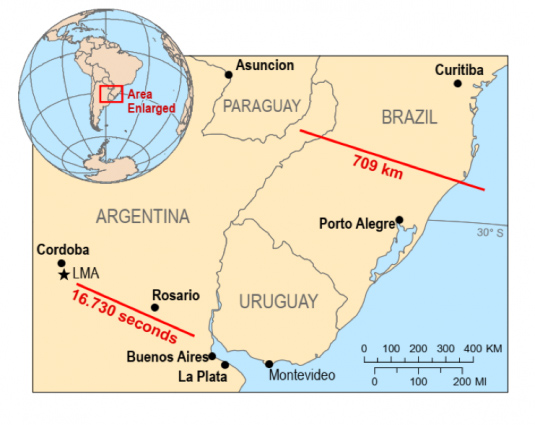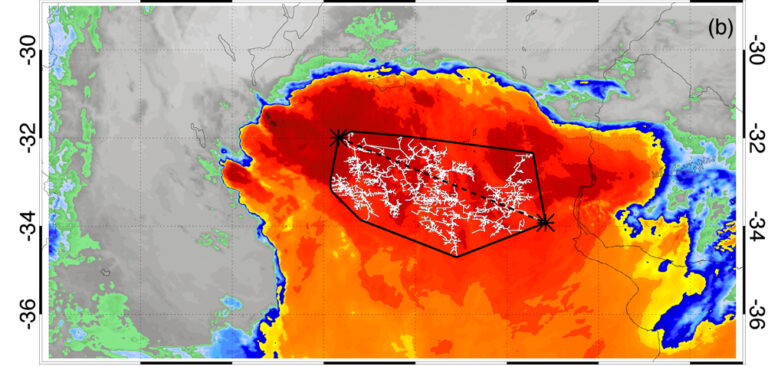A World Meteorological Organization (WMO) committee of experts has established two new world records for the longest reported distance and the longest reported duration for a single lightning flash in, respectively, Brazil and Argentina.
The new records for ‘megaflashes’, which have been verified with new satellite lightning imagery technology, more than double the previous values measured in the USA and France. The findings were published by the American Geophysical Union’s Geophysical Research Letters.
WMO’s Committee on Weather and Climate Extremes, which maintains official records of global, hemispheric and regional extremes found that:
- The world’s greatest extent for a single lightning flash is a single flash that covered a horizontal distance of 709km (±8km) [440.6 miles (±5 miles)] across parts of southern Brazil on October 31, 2018. This is equivalent to the distance between Boston and Washington DC in the USA or between London and the border of Switzerland near Basel.
- The greatest duration for a single lightning flash is 16.73 seconds from a flash that developed continuously over northern Argentina on March 4, 2019.
The previous record for the longest detected distance for a single lightning flash was for 321km (199.5 miles) on June 20, 2007, across the US state of Oklahoma. Both the previous and new record used the same maximum great circle distance methodology to measure flash extent. Meanwhile, the previous record for duration was for a single lightning flash that lasted continuously for 7.74 seconds on August 30, 2012, over Provence-Alpes-Côte d’Azur, France.
The earlier assessments that established the older flash duration and extent records used data collected by ground-based lightning mapping array (LMA) networks. Many lightning scientists acknowledged that there are upper limits for the scale of lightning that could be observed by any existing LMA. Identifying megaflashes beyond these extremes would require a lightning mapping technology with a larger observation domain.
The WMO said that recent advances in space-based lightning mapping offer the ability to measure flash extent and duration continuously over broad geospatial domains. These new instruments include the Geostationary Lightning Mappers (GLMs) on the R-series Geostationary Operational Environmental Satellites (GOES-16 and 17) that recorded the new lightning records, and their orbiting counterparts from Europe (the Meteosat Third Generation [MTG] Lightning Imager) and China (FY-4 Lightning Mapping Imager).
With these new space-based resources, the WMO noted that near-global coverage of total lightning (both intracloud flashes and cloud-to-ground flashes) is facilitated. This includes the Americas hotspots for Mesoscale Convective System (MCS) thunderstorms whose dynamics permit extraordinary megaflashes to occur – namely, the Great Plains in North America, and the La Plata basin in South America.




